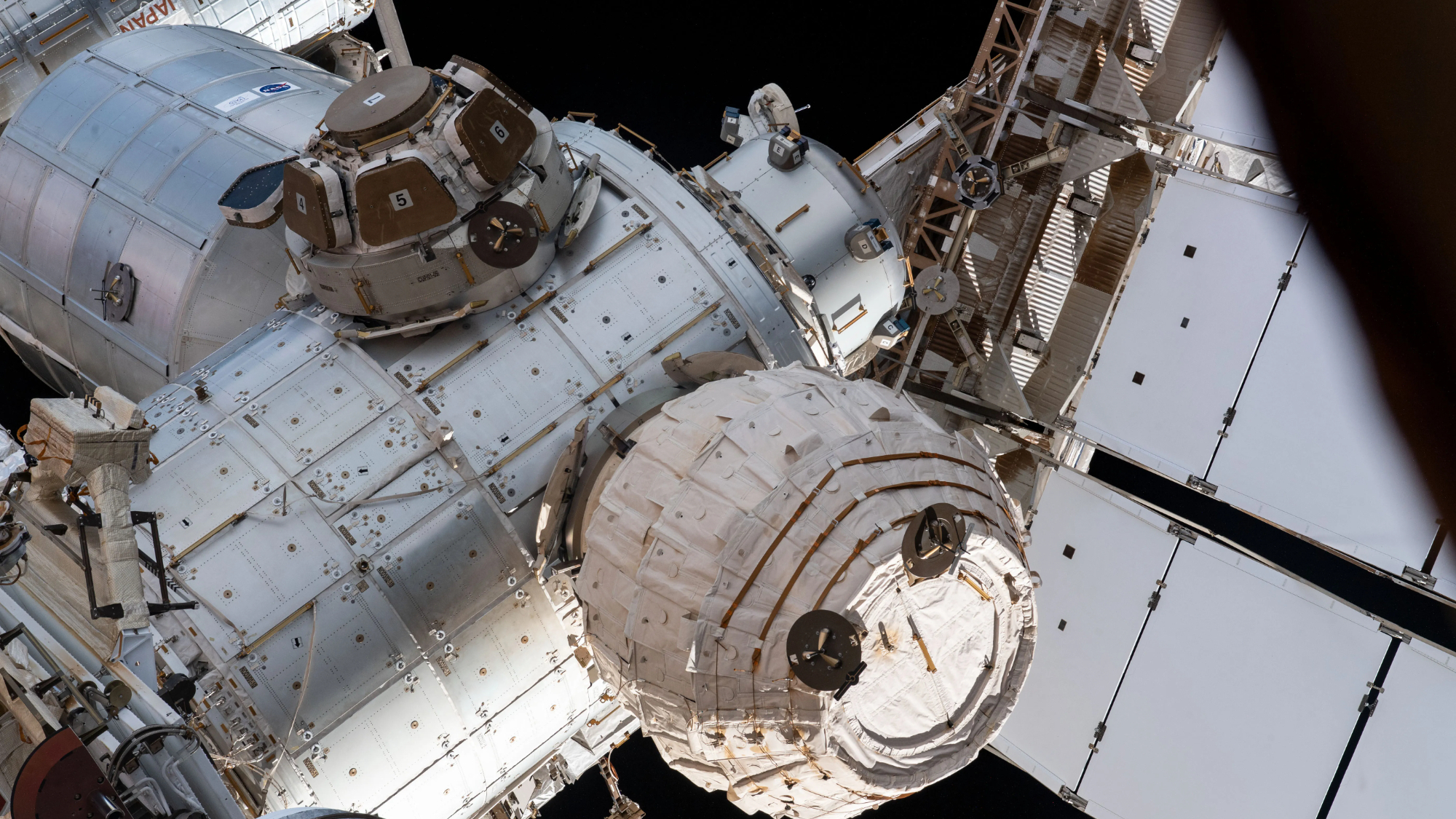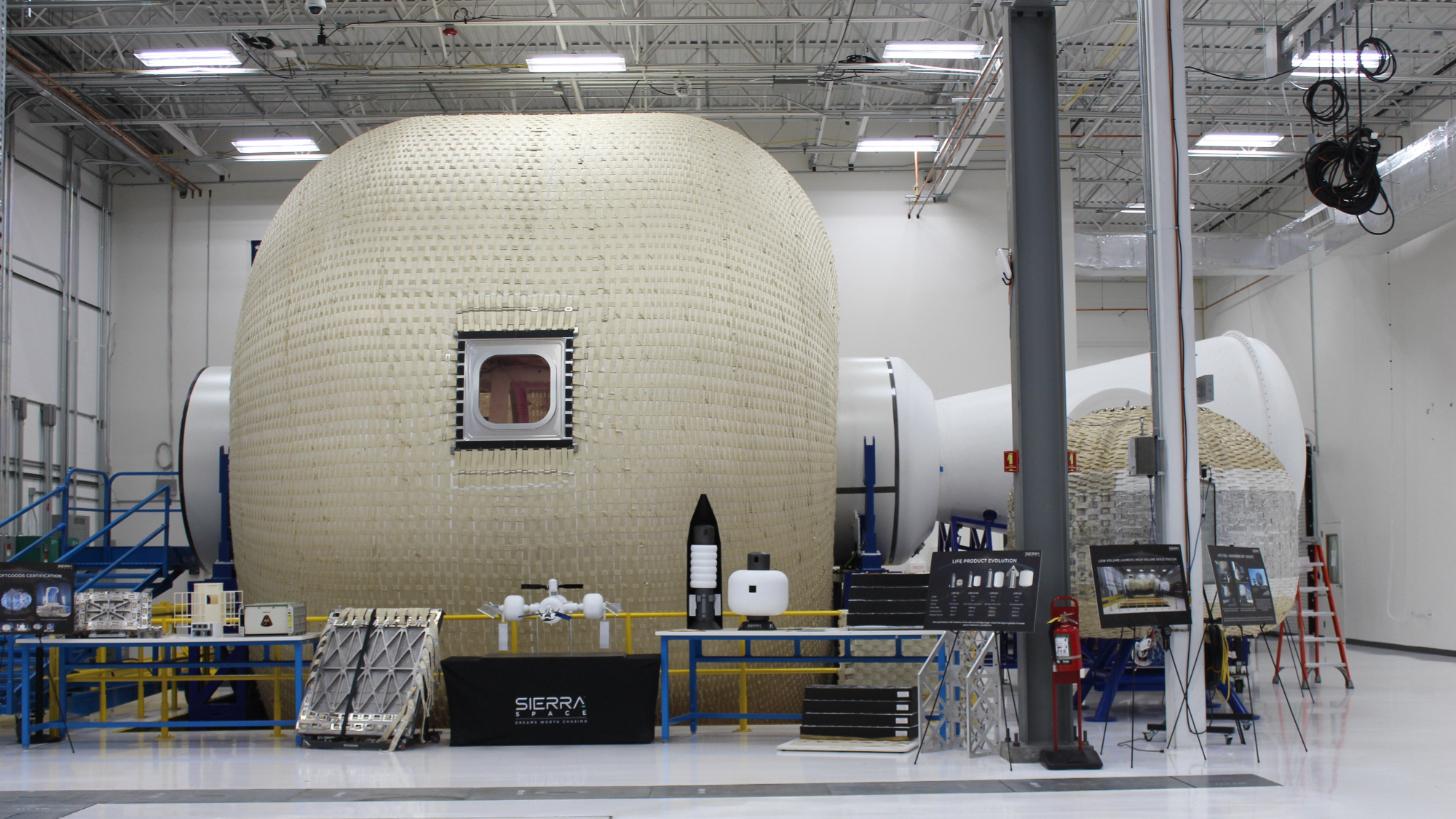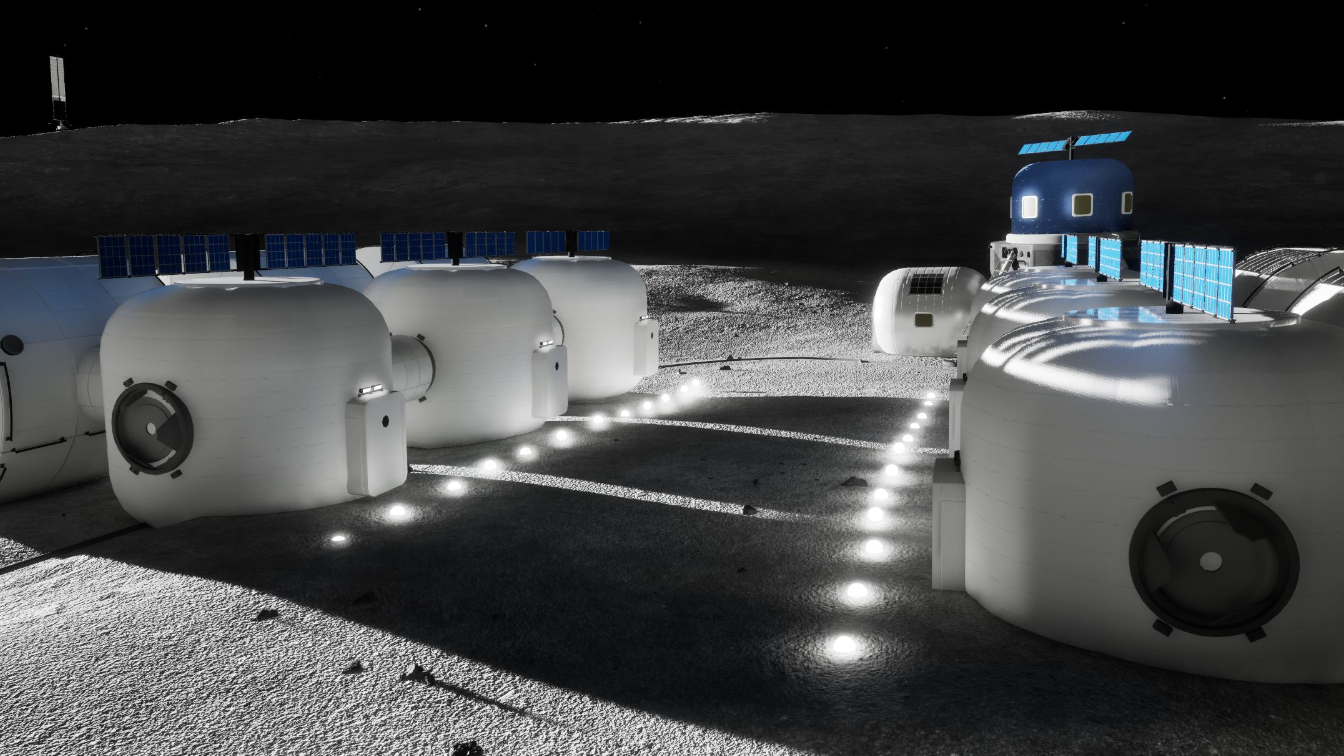It is excessive time to crank up the quantity in house! That is the shout from a number of personal corporations that need to see an inflation issue for the longer term.
What’s now being evaluated and examined is the usage of “softgoods” to vogue inflatable/expandable airlocks and off-Earth habitats, not just for low Earth orbit, but in addition to offer comfortable housing for future moon and Mars explorers.
First, nonetheless, there is a reminiscence lane journey about this concept value taking, one which additionally underscores how far issues have advanced.
The roots of inflatable house tech
Take for instance, Venture Echo, which concerned two American spacecraft, the primary launched in 1960 and the second in 1964. They had been thin-skinned Mylar balloon satellites. These gassed-up balloons — Echo 1 expanded to 100 toes (30.48 meters), whereas Echo 2 inflated to 135 toes (41 m) — examined the reflection of microwave alerts from one level to a different on Earth.
Associated: Might these huge expandable habitats assist humanity settle the moon and Mars?
Then, in March 1965, Soviet cosmonaut Alexei Leonov made use of an inflatable airlock connected to his Voskhod 2 spacecraft to hold out humanity’s first spacewalk. However that milestone turned out to be no stroll within the park.
The tethered Soviet spacewalker’s go well with stiffened a lot within the vacuum of house, Lenov needed to bleed off a few of his go well with’s strain, permitting him to lastly bend the spacesuit joints to clamor again into his mothership.

Bigelow birthright
Enter the twenty first century and the pioneering work of Robert Bigelow and his group at Las Vegas-based Bigelow Aerospace.
The corporate constructed two uncrewed free-flying expandable prototype modules that launched to Earth orbit in 2006 and 2007, respectively, beneath its Genesis program. They’re nonetheless circling the globe to today.
Whereas drawing from NASA’s canceled TransHab effort, the Bigelow Aerospace enterprise was a artistic hub that furthered expandable house module expertise.
An outgrowth of their labor is now connected to the Worldwide Area Station (ISS). The Bigelow Expandable Exercise Module, or BEAM for brief, arrived on the ISS and stays connected to its Tranquility module to today.
Bigelow Aerospace and its ground-breaking work in expandable modules included use of proprietary extensions of Vectran defend cloth, a stronger various to Kevlar. Vectran is a high-performance liquid crystal polymer fiber providing superior attributes in comparison with Kevlar.
Bigelow is now not working — the corporate closed its doorways in 2020 — however its affect should be felt going ahead.
Increasing competitors
Right this moment, a number of main corporations are pushing ahead on expandable buildings in house, equivalent to the brand new startup Max Area, which is engaged on inflatable habitats for Earth orbit, the moon and Mars.
And Sierra Area is concerned as nicely, creating a habitat known as the Massive Built-in Versatile Atmosphere (LIFE).
Equally, Lockheed Martin is testing inflatable construction ideas that supply benefits over all-metal counterparts.
Every group is eyeing the promising potential for expandable expertise. And every firm has its personal proprietary “secret sauce” embedded of their merchandise.
Associated: NASA’s moon-orbiting house station can be claustrophobic, architect says
Megastructures
“The way forward for house is restricted by house,” defined Maxim de Jong, co-founder of Max Area, based mostly in Jacksonville, Florida with design workplaces in Vancouver, Canada.
No stranger to expandable house buildings, de Jong designed the strain restraining hulls of Bigelow’s Genesis 1 and a pair of — the primary spacecraft on orbit to efficiently incorporate large-volume, high-stress inflatable structure.
“We’re gearing as much as fly our maiden mission in 2026,” de Jong informed Area.com. Inside that course of, the group has not too long ago carried out profitable deployment checks of a brand new house particles defend design. “That could be a actual progress discriminator, given how difficult, when it comes to design, time and price, particles defend improvement is.”
The Max Area purpose is to have a household of scalable habitats in house, starting from 20 cubic meters (700 cubic toes) to 100 cubic meters (3,500 cubic toes) to 1,000 cubic meters (35,000 cubic toes) through 2030. There’s the potential to scale as much as 10,000-cubic-meter (350,000 cubic toes) “megastructures” that could possibly be launched into house on a single flight, utilizing SpaceX’s Starship megarocket or Blue Origin’s New Glenn, “as soon as they’re on-line,” the Max Area web site states.
Larger quantity and fewer mass
Lockheed Martin consultants clarify that inflatable buildings provide better quantity for much less mass. That interprets into bigger liveable volumes able to being rocketed into house, tucked inside fairly sized payload fairings.
Lately, a pathfinder unit constructed for airlock purposes underwent pressurization and depressurization checks. The airlock design was put via a number of cycles to evaluate “creep” components of its Vectran materials make-up.
Lockheed Martin, in partnership with NASA’s Marshall Area Flight Middle in Alabama, initiated a 100-hour “creep” check through which the softgoods unit is pressurized to a proportion of its final burst strain of 285 pound per sq. inch (PSI) and held at this strain till a burst failure happens on account of creep.
Creep is everlasting materials deformation.
“The focused time-to-failure for this check was round 100 hours,” stated Uy Duong, habitation chief engineer at Lockheed Martin. “This check has already made it previous the 1,500-hour mark with out failure, and we’ll proceed the check till burst or mid-December if no burst occasion happens between from time to time.”
Duong and firm colleagues are eyeing massive, inflatable habitats to be used on the moon and Mars, in addition to in low-Earth orbit.

A lot of room
Shawn Buckley is vice chairman of Area Locations and In-Area Infrastructure at Sierra Area in Louisville, Colorado. Previously, he was a key BEAM architect at Bigelow Aerospace.
Now, at Sierra Area, Buckley and his group are busily at work on the LIFE habitat, blueprinting a product evolution line that would result in a module providing 5,000 cubic meters (175,000 cubic toes) of quantity by increasing to over 70 toes (22 m) in size and 62 toes (19 m) in diameter.
The primary product within the Sierra Area roadmap is a big, expandable three-story construction that’s 27 toes (over 8 m) in diameter. It may be positioned into Earth orbit by a standard rocket outfitted to accommodate 4 astronauts, with “spacious” room for science experiments, exercise gear, a medical middle and a particular greenhouse that grows meals for explorers on long-duration missions.
“In a bit of over 2.5 years, we’ve got been capable of construct and check seven articles, and now going into our eighth. We’re transferring at a quick price,” Buckley informed Area.com. “The expertise is basically gaining momentum, and we’re transferring in a short time.”
Buckley stated that repeat testing is important. “That’s what provides NASA and our clients the arrogance. On the finish of the day, the extra knowledge that we will get the higher knowledgeable we’re,” he stated.

Area of interest goal
Inflatable habitat construction methods “have a task as one instrument in our toolkit for increasing, so to talk, human spaceflight for brand spanking new markets and missions,” stated Brent Sherwood, a famous house architect and house area lead for the American Institute of Aeronautics and Astronautics. His previous posts embody being a senior vice chairman of house methods improvement at Blue Origin.
“Like all instruments, they’re finest used for a distinct segment goal,” Sherwood informed Area.com. Expandable buildings could discover specific use as “connector parts,” he added.
“For instance, on the lunar floor, pretty quickly we’ll want bodily compliant methods of connecting separate habitat modules,” Sherwood stated.
“Compliant means accommodating completely different flooring ranges — say, from a lander to a pressurized rover — imprecise floor positioning, equivalent to in early base building, and thermal enlargement and contraction on account of lunar day/evening cycles,” Sherwood stated.
A bit of compliance can go a protracted approach to simplifying the general system structure, stated Sherwood. “So it could be that among the best makes use of is relatively small connector parts moderately than the purpose of ‘making huge modules greater,'” he identified.
“Finally, we must discover ways to fabricate super-big strain vessels in house, however we’ve got lots of market progress and validation to do between from time to time,” Sherwood concluded.





